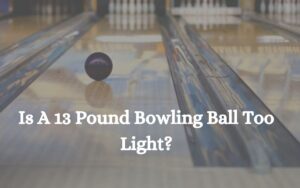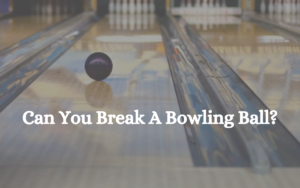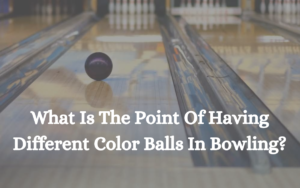What Is The Point Of Having Different Color Balls In Bowling?

Bowling with different colored balls serves different purposes. To start with different colors make it possible for bowlers to immediately recognize and differentiate their balls from those of other players. This is specifically valuable in team setups or tournaments where numerous competitors utilize the same ball design.

The color modification gives a personalized and aesthetic element to the game. Bowlers can choose a ball color that represents their tastes or personality. It enables people to reveal themselves or build a distinct identity on the bowling lane.
In addition contrasting colors help in increasing visibility and performance. Particular people might find it easier to track the route of a colored ball, making it quicker to change their throws as well as increase their accuracy.
Brightly colored balls can likewise stand out against the background, helping bowlers in finding their preferred target pins.
Ultimately the availability of multiple color choices in bowling balls includes a touch of fun, personality, and a pragmatic mindset to the sport, increasing the players experience and the game’s general looks.
What Does A Circle Mean In Bowling?
A circle is typically used on the score sheet to represent a strike. A strike happens when a bowler knocks down all 10 pins with their first ball in a frame and also it is shown on the score sheet by a circle (“O”).
A strike is just one of the most preferable results in bowling because it gives the bowler the best score for that frame (10 points and the pin fall of the following 2 balls). The frame number is noted on the score sheet by drawing a circle around it.
The circle represents the shape of a ” zero” or ” O” showing that all 10 pins were knocked down with a single roll of the ball. A strike adds to a bowler’s total score and also positions them to achieve higher scores by adding bonus points in later frames.
What Does The Red Circle Mean In Bowling?
A red circle is painted around the number of pins knocked down on the first throw to show the Split. The red circle represents the headpin, the first pin in a traditional ten-pin bowling setup.

The headpin is in the center of the triangular pin arrangement. Its bright red color makes it easy for bowlers to distinguish. It functions as a reference point for aiming as well as targeting.
Bowlers go for the red circle or head pin with their bowling ball to cause a chain reaction that knocks down the surrounding pins and causes a better score.
You might interested in : What Muscles Are Used When Bowling?
What’s The Purpose Of The Colored Balls On The Pins?
The colored balls on bowling pins act as markers helping players as well as automated scoring systems in recognizing particular pins during gaming. The colors typically follow a pattern, with the headpin (front pin) white or red as well as the following pins in blue, green, yellow and black.
These colored marks benefit bowlers and scoring systems, enabling them to trace which pins were knocked down on each throw properly.
Which Mark Displays a Gutter Ball?
A gutter ball is marked with an ‘X’ or a ‘0’ (zero) on the score sheet, depending on whether the bowler rolled the ball on the first or 2nd roll of the frame.
If a bowler throws a gutter ball on their first roll and fails to knock down any of the pins an ‘X’ shows up in the frame’s first box. This means that the bowler did not score any of the points on that roll.
If a bowler places a gutter ball on their 2nd roll (after hitting pins on the first) it is indicated with a ‘0’ (zero) in the frame’s relevant box. This means that the bowler did not knock down any pins with the 2nd roll and did not receive points for that roll.
In both scenarios, a gutter ball shows that the ball rolled into the gutter without hitting any pins, leading to no points made for that roll.
What Is The Hidden Pin Called In Bowling?
The hidden pin behind the headpin (the front pin in a complete rack) is additionally called the “sleeper” or ” back pin.” The headpin can block this pin from the bowler’s point of view making it harder to knock down. The sleeper pin can transform bowlers’ strategy and changes while aiming their shots as it might demand various targeting and also ball placement to properly grab a spare or score a strike.
Final Thoughts
Bowling with different colored balls offers a number of features. It enables bowlers to differentiate their balls from others, adds uniqueness along with style, increases visibility as well as performance and adds to the game’s general satisfaction and aesthetics.
The red circle in bowling on the other hand describes the headpin, which is the first pin in a common ten-pin layout. Its bright red color makes it simple for bowlers to see and target as they look for ideal results and greater scores in the game.




